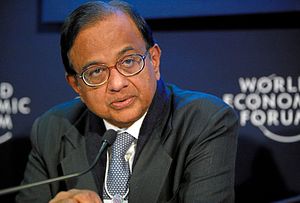Budgets, especially interim budgets, don’t tend to make for exciting news. However, with an imminent election and a still-stumbling economy, many closely watched what the Indian Finance Minister had to say last week in his final budget speech.
India’s ruling UPA coalition has stewarded the economy for 10 years, throughout which it has been accused of corruption and fiscal mismanagement. In policy terms, last week’s interim budget speech – announcing government spending commitments until the May election – was relatively unimportant. But as the UPA’s decade in office draws to an end, there was a distinct feeling that Palaniappan Chidambaram, as Finance Minister, was writing his government’s economic obituary.
Unsurprisingly, Chidambaram used his swan song to recount his government’s successes. “The UPA’s record on growth is unparalleled,” he said, crediting it with having ushered in a more inclusive, developmental and sustainable growth model. “I was confident that the decline will be arrested and the growth cycle will turn … I believe I have been vindicated,” he said.
Most external observers, however, are less sanguine. India’s economy is feeling the strain of stagnant sub-5 percent growth, high consumer inflation (approaching 10 percent), low foreign investment and an underperforming manufacturing sector. In a recent report, the IMF described India’s slowdown as “unusual among emerging markets both in its severity and the fact it has coincided with elevated inflation.” HSBC, the global investment bank, recently came to a similarly pessimistic verdict: India’s economy, it said, was “stuck in a rut.”
Chidambaram issued many pleasing signals during his speech: recognizing the manufacturing sector as India’s economic “Achilles heel,” he proposed an ambitious program of re-investment and job creation, pleasing industrialists. Despite explicitly inviting more foreign investment, Chidambaram was less successful in placating financiers.
Andy Mukherjee, Asia economics columnist for Reuters, argues India should be chasing investments from multinationals, but the country’s adverse investment climate – characterized by a complex tax regime and a dismal policy record – has driven away foreign funds. Before the financial crisis, India’s rate of corporate investment reached a peak of 17 percent of GDP. Now, it stands at a mere 9 percent. As Sajjid Chinoy, chief India economist at JP Morgan, outlined, problems associated with land acquisition, project clearances and resource availability are to blame. What is needed is an “all-out war on implementation bottlenecks, bureaucratic risk aversion and regulatory uncertainty,” Chinoy said.
Most are clear about what needs to be done and how to go about it. Subir Gokarn, a former deputy governor of India’s central bank, outlined a three-point plan last week: (1) improve infrastructure and cap subsidies, (2) curb inflation and (3) address the current accounts deficit. To his credit Chidambaram’s speech mentioned each of these, but India’s reputation for policy paralysis has dashed hopes of these objectives being achieved.
In his speech, Chidambaram was quick to dismiss governance as an issue: “I reject the argument of policy paralysis. Just as there are business cycles, there is a cycle around the trend growth rate of an economy.” Instead, he has consistently blamed India’s sluggish growth on the ailing global economy. But this claim was roundly rejected by the IMF, which concluded in its report that domestic policy decisions were to blame for two-thirds of India’s economic woes.
Last summer India’s economy was the “poster-child of emerging market vulnerability”: the value of the rupee spiraled downwards, inflation rocketed and India’s current accounts deficit swelled. The decisive action taken since then has staved off a crises, reassuring Chinoy that when India’s “policymakers truly put their resolve behind an outcome, they find a way or make one.”
Whatever the impact of the speech, in the run up to the election the ruling Congress party faces the uncomfortable truth that the past two years have been India’s worst for growth in at least a decade. The budget announced modest improvements with deficit reduction and, having avoided a threatened downgrading by rating agencies, India now appears to be on the road to recovery. But the Finance Ministry is notorious for tweaking the figures – shuffling spending here and there – to suit newsworthy announcements, and the reality is, as T.N. Ninan wrote, that “whatever macroeconomic variable you look at, the picture is worse than when the first Manmohan Singh government took charge.”
The budget shows clear signs of the government attempting change. Criticized for “populist patronage” – of introducing fiscally irresponsible welfare policies – Chidambaram has slashed his government’s budget for subsidies and diverted funds to key growth-related areas: urban renewal, energy, scientific research and water. But this may be a case of too little, too late: having presided over a few years of near-double-digit growth, Congress will have to reconcile itself with a disappointing economic legacy.

































